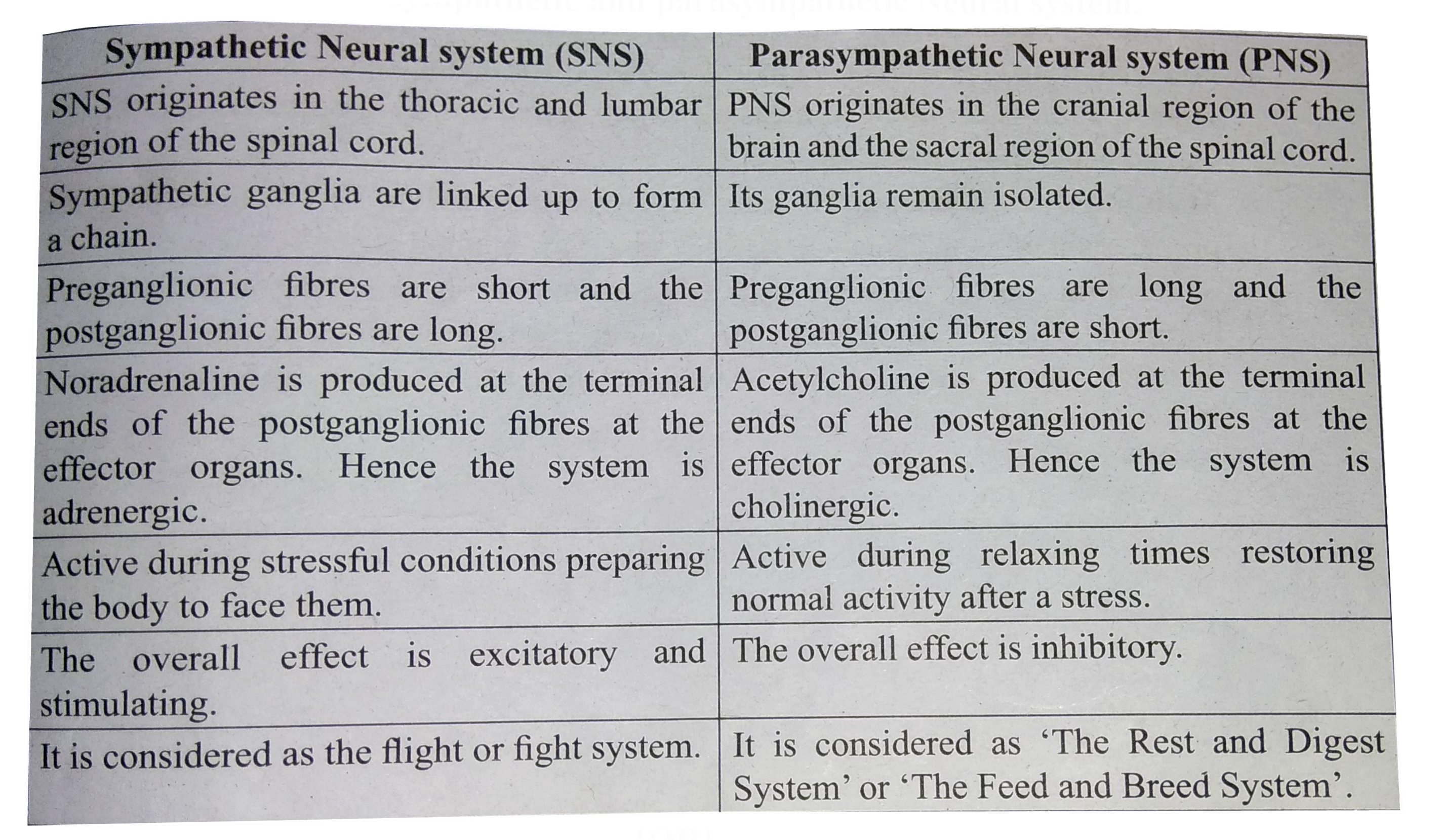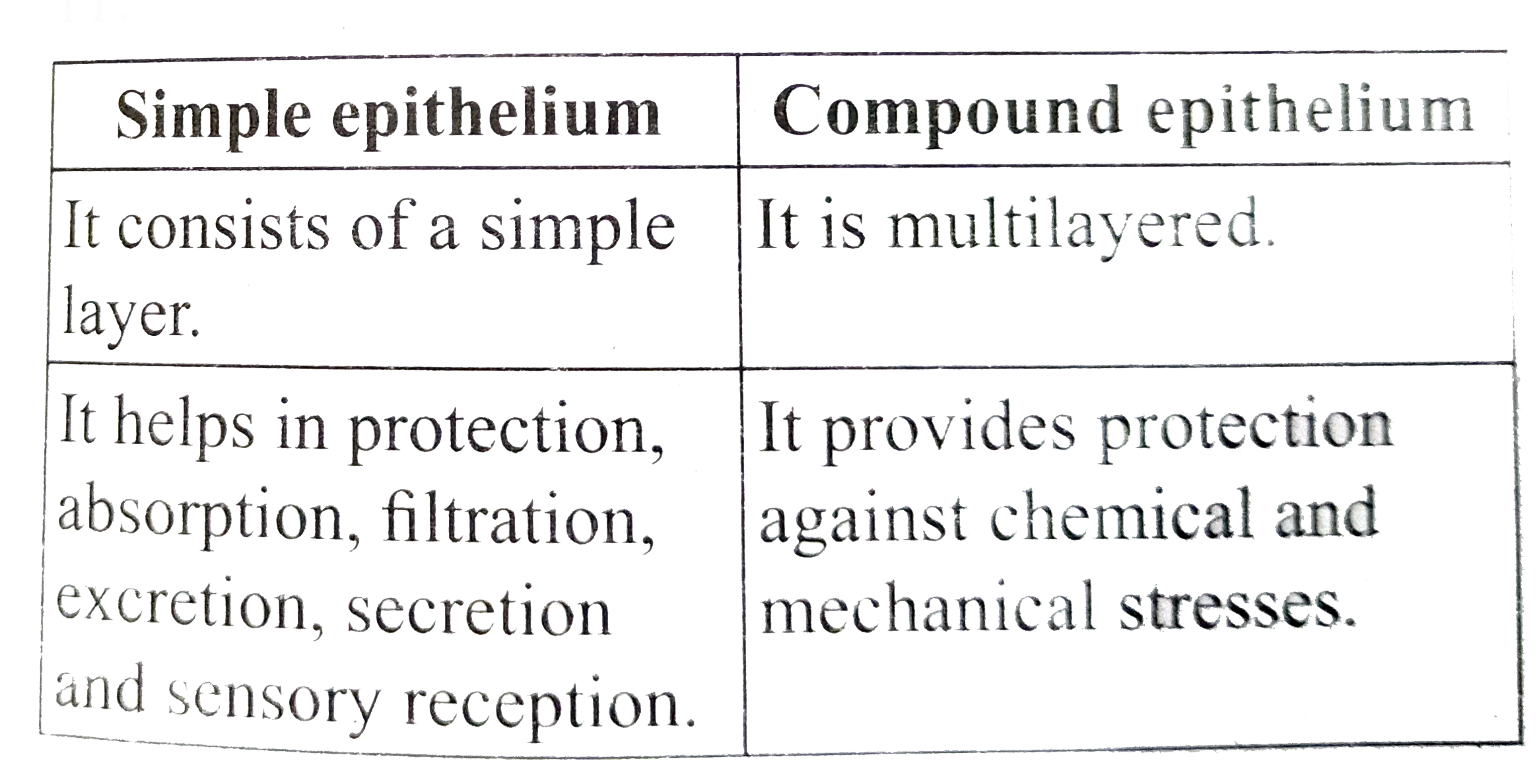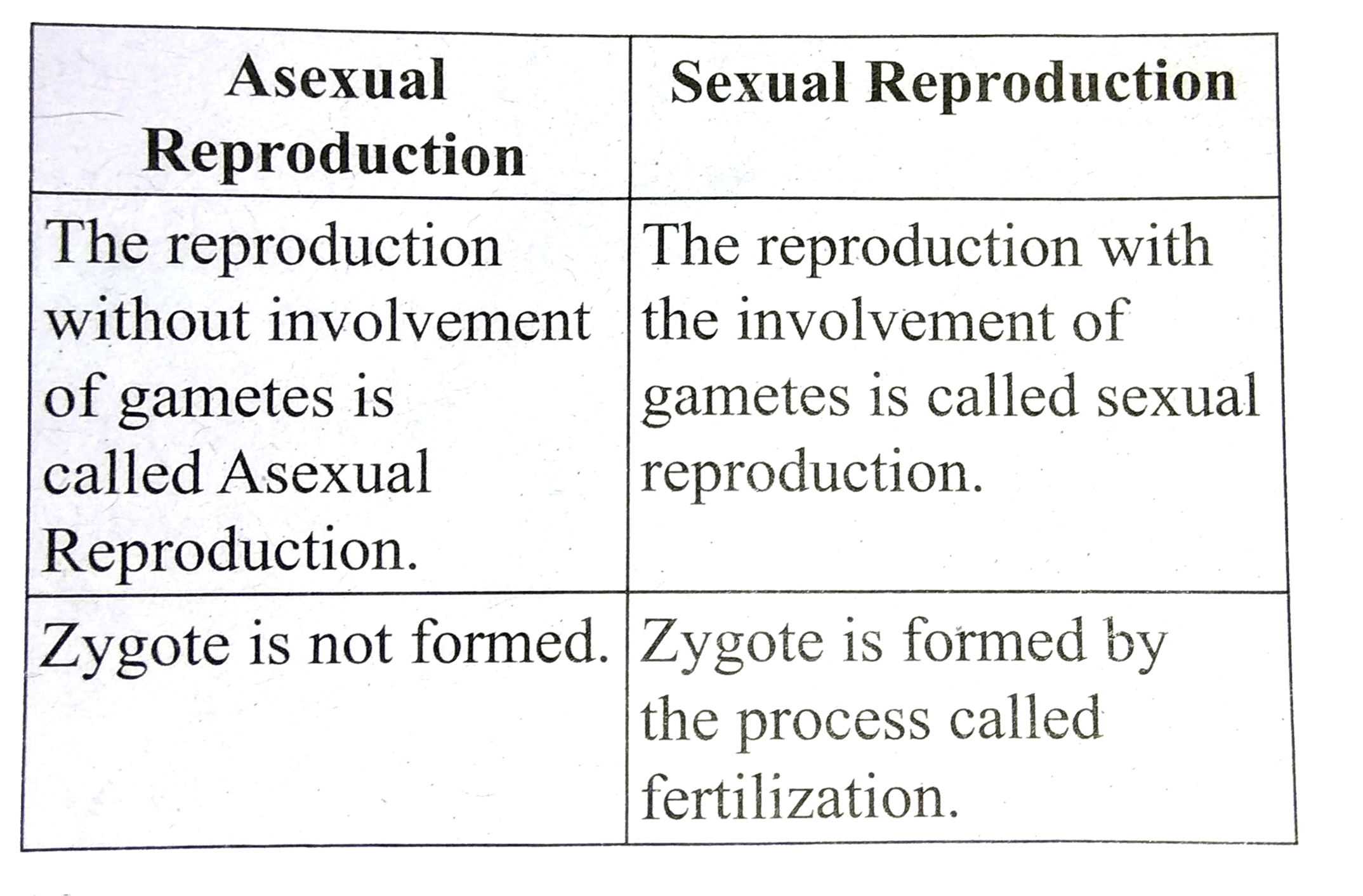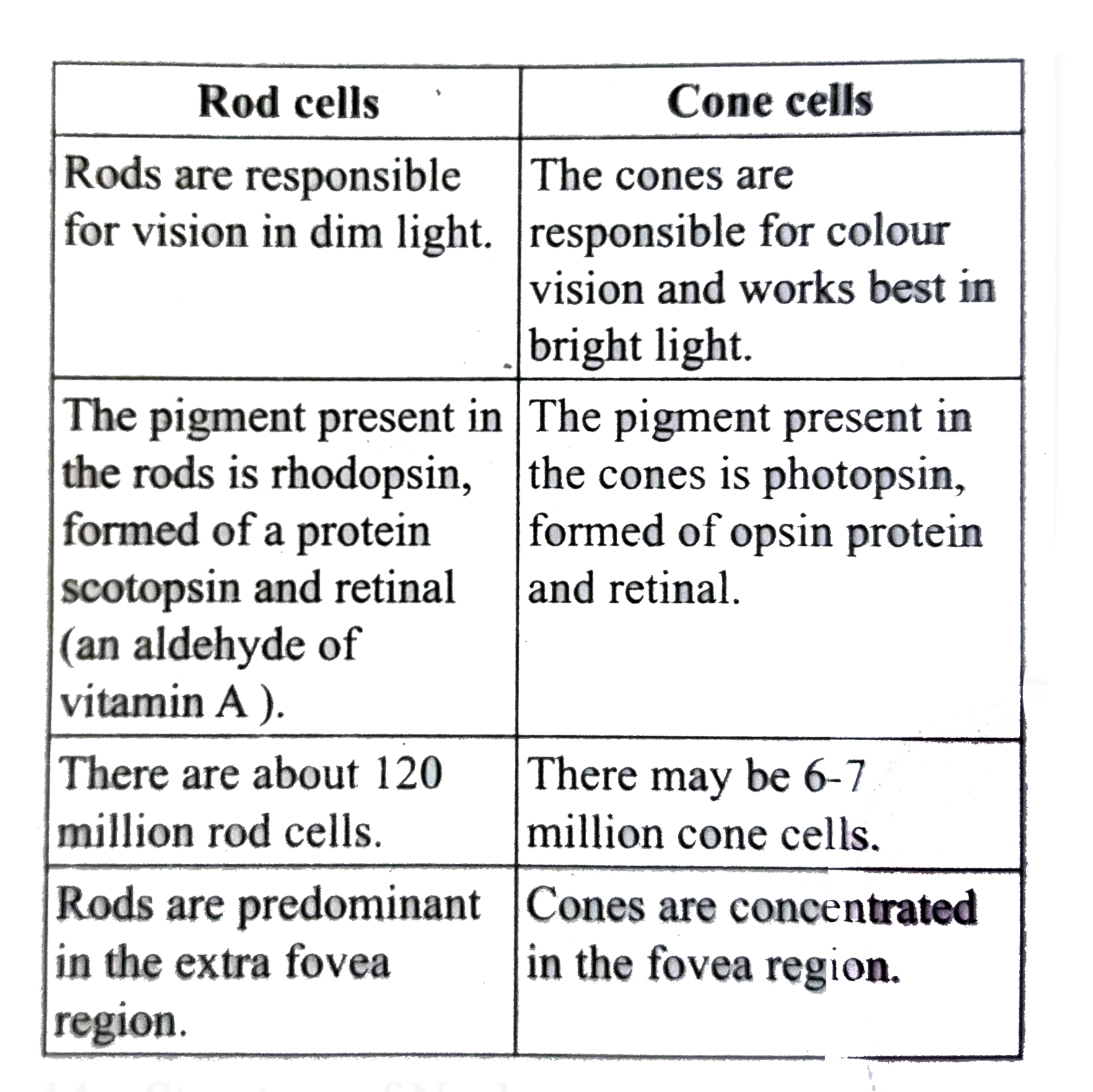InterviewSolution
Saved Bookmarks
This section includes InterviewSolutions, each offering curated multiple-choice questions to sharpen your knowledge and support exam preparation. Choose a topic below to get started.
| 18051. |
Question : List the differences between taxonomy and systematics. |
Answer» SOLUTION :
|
|
| 18052. |
Question : Differentiate between Tap root and adventitious root |
| Answer» Solution :Tap root develops from radicle and the primary root persists THROUGHOUT the life. Whereas, the adventitious root develops from any PART of the PLANT other than radicle and the primary root is short-lived and is soon REPLACED BYMANY adventitious roots | |
| 18053. |
Question : Differentiate between Syngamy and Triple fusion. |
| Answer» Solution :Syngamy and TRIPLE fusion. In angiosperms, two male gametes are formed. In syngamy one male gamete fuses with the EGG and this results in the formation of a diploid zygote. The other male gamete fuses with the two polar NUCLEI (or SECONDARY nucleus) and forms a triple fusion nucleus, called PRIMARY endosperm nucleus. Thisprocess is called triple fusion. | |
| 18054. |
Question : Differentiate between sympathetic and parasympathetic Neural system. |
Answer» SOLUTION :
|
|
| 18055. |
Question : Differentiate between Symmetric and Asymmetric karyotypes. |
| Answer» Solution :The symmetric karyotype SHOWS LITTLE DIFFERENCES in the size of the chromosomes of the SET, WHEREAS the asymmetric karyotype has large differences between the smallest and the largest chromosome of the set. | |
| 18056. |
Question : Differentiate between Stoma and Stroma |
| Answer» Solution :Stoma is a minute aperture in the epidermis of leaves and other AERIAL parts of the plant. Each aperture is BOUNDED by two specialized kidney SHAPED cells, called guard cells. Whereas stroma is a SPACE in plastids enclosed by the double membraned envelope. It is filled with a PROTEINACEOUS matrix and contains a complex inner membrane system. | |
| 18057. |
Question : Differentiate between Stem tuber and root tuber |
| Answer» Solution :Stem tuber is a swollen underground stem, differentiated into NODES and internodes. WHEREAS root tuber is a swollen root, not differentiated into nodes and internodes. Stem tuber is borne at the tip of underground stem branches. Whereas root tuber develops adventitiously from any PART of the stem. An apical BUD is present in stem tuber whereas it is absent in root tuber. | |
| 18058. |
Question : Differentiate between stolon and sucker. |
| Answer» Solution :The tip of SUCKER directly bends upwards to produce an upright AERIAL SHOOT. The tip of STOLON, on the other hand, does not come above ground. | |
| 18059. |
Question : Differentiate between Sporangiospores and conidiospores |
| Answer» Solution :Sporangiospores are PRODUCED WITHIN a sac-like structure, the sporangia, which develop on SPORANGIOPHORES. On the CONTRARY, conidiospores (conidia)are produced exogenously on conidiophores. | |
| 18060. |
Question : Differentiate between species and taxon. |
| Answer» Solution :The species is a group of individuals that closely resemble each other either because they freely interbreed in NATURE or because they have descended from common ancestors. The taxon refers to CONCRETE biological OBJECTS INCLUDED in a category representing a rank. | |
| 18061. |
Question : Differentiate between Spongy bone and compact bone |
| Answer» SOLUTION :There is no haversian system in SPONGY bone, WHEREAS SEVERAL harversian systems are PRESENT in acompact bone. | |
| 18062. |
Question : Differentiate between Single-unit and multi-unit smooth muscles |
| Answer» Solution :Single-unit muscles are composed of muscle fibres closely joined TOGETHER by gap junctions, all fibres in a muscle CONTRACT together as a single unit. Whereas, in multi-unit muscles, fibres remain separated from each other by a BASEMENT MEMBRANE, the individual fibres ofthese muscles thus contract as separate units. | |
| 18063. |
Question : Differentiate between Simple diffusion and facilitated diffusion |
| Answer» Solution :Transport of metabolites across the membrane along the concentration gradient and without the use of a carrier molecule is called simple diffusion. It is a SLOW process. On the contrary, facilitated diffusion is a more rapid FORM of diffusion, in which the MOLECULES MOVE through channels in the membrane. In facilitated diffusion a carrier (PROTEIN) is required for transport acrossthe membrane. | |
| 18064. |
Question : Differentiate between Simple epithelium and compound epithelium |
| Answer» SOLUTION :Simple epithelium consists of a single LAYER of CELLS resting upon a basement MEMBRANE, whereas COMPOUND epithelium consists of more than one layer of cells, the cells of the innermost layer (germinative layer)rest on the basement membrane. | |
| 18065. |
Question : Distinguish between (a) Simple epithelium and compound epithelium. (b) Cardiac muscle and striated muscle (c) Dense regular and dense irregular connective tissues (d) Adipose and blood tissue (e) Simple gland and compound gland |
Answer» SOLUTION :
|
|
| 18066. |
Question : Differentiate between Simple , aggregate and multiple fruits. |
| Answer» Solution :Those fruits which are derived from a single carpel or more than one fused carpels of a flower with or without the PARTICIPATION of ACCESSORY parts are KNOWN as SIMPLE fruits. Aggregate fruits develop from SEVERAL ovaries of free carpels of the same flower. An individual ovary develops into a drupe, achene, follicle or berry. An aggregate of these fruits borne by a single flower is known as an etaerio. A multiple fruit develops from an inflorescence where flowers are crowded together andoften fused with one another. | |
| 18067. |
Question : How is sexual reproduction different from asexual reproduction ? |
Answer» SOLUTION :
|
|
| 18068. |
Question : Differentiate between Sieve cells and sieve tubes |
| Answer» Solution :Both sieve cells and sieve tubes are sieve elements. But sieve cells, which OCCUR in pteridophytes and gymnosperms, are single cells with less specialized sieve areas usually in their lateral walls, whereas sieve tubes, which occur in angiosperms, are longitudinal file of cells with highly specialized sieve area (sieve plate) usually in or near an end wall. The most CHARACTERISTIC feature of sieve tubes is the presence of thickened cross walls between two adjacent sieve tube members, which are KNOWN as sieve PLATES. | |
| 18069. |
Question : Differentiatebetweensecondary growthindicotstemand root . |
Answer» SOLUTION :
|
|
| 18070. |
Question : Differentiate between S -phase and G_2 -Phase . |
Answer» SOLUTION :
|
|
| 18071. |
Question : Runner and sucker |
| Answer» Solution :Rhizome is a THICKENED, HORIZONTAL, underground stem provided with distinct nodes and internodes and a TERMINAL bud. Whereas bulb is highly reduced DISCOID conical stem with numerous SCALE leaves. The disc bearsa terminal bud which is surrounded by scale leaves. | |
| 18072. |
Question : Differentiate between: Rods and cones |
Answer» SOLUTION :
|
|
| 18073. |
Question : Differentiate between runner and stolon. |
| Answer» Solution :Runner is an above ground, horizontal, green SPECIALISED stern BRANCH which produces ROOTS from nodes for ATTACHING to the soil and develop erect shoot from the apical bud. Stonons, on the other hand, initially grow upwards like ORDINARY branches and then arch down to develop new daughter plants on coming in contact with the soil. | |
| 18074. |
Question : Differentiate between Rough Endoplasmic Reticulum (RER) and Smooth Endoplasmic Reticulum (SER). Rough Endoplasmic Smooth Endoplasmic |
Answer» SOLUTION :
|
|
| 18075. |
Question : Differentiate between Rough endoplasmic reticulum (RER) and smooth endoplasmic reticulum (SER) |
| Answer» Solution :Endoplasmic reticulum (ER) forms a continuous NETWORK extending from the cell membrane to the nuclear membrane. In many parts of the cell the endoplasmic reticulum is associated with ribosomes, lying ALONG the outer border of its membrane. They IMPART a rough appearance to the endoplasmic reticulum, that.s why ER is called rough endoplasmic reticulum (RER). In some instances, the ER is not associated with ribosomes and then it is said to be smooth endoplasmic reticulum (SER). The RER is concerned with the transport of proteins which are made by ribosomes on its SURFACE. On the contrary, the SER plays an especially important role in the synthesisand assembly of glycolipids. | |
| 18076. |
Question : Differentiate between root climbers and stem climbers. |
| Answer» Solution :Root climbers climb up the support with the HELP of ADVENTITIOUS roots WHEREAS stem climbers climb the support with the help of stem THORNS or stem TENDRILS. | |
| 18077. |
Question : Write the difference between Rod cells and Cone cells. |
Answer» SOLUTION :
|
|
| 18078. |
Question : Differentiate between Reticulate and parallel venation |
| Answer» Solution :When veins are irregularly distributed to FORM a NETWORK, it is known as reticulate venation. On the other hand, when veins run PARALLEL to each other and do notform a RETICULUM, it is known as parallel venation. | |
| 18079. |
Question : Differentiate between Red and white muscle fibres |
| Answer» Solution :In mammals and birds, two types of SKELETAL muscle FIBRES, viz. (i) red, and (ii) white occur. Red muscle fibres (also called SLOW twitch fibres) are comparatively thin, darker in colour and SLOWER in contraction rates. Their red colour is due to the presence in the sarcoplasm) of a pigment called myoglobin. MITOCHONDRIA are more numerous in red fibres, but sarcoplasmic reticulum is less extensive. This sarcoplasm contains more glycogen. They can go on contracting for prolonged durations without fatigue. On the other hand, white muscle fibres (also called fast twitch fibres) are thicker, lighter in colour, poorer in mitochondria, free of myoglobin and faster in contraction rates. Since the white fibres depend mainly on anaerobic glycolysis for energy production, they accumulate lactic acid in considerable amounts during strenuous work andsoon get fatigued. | |
| 18080. |
Question : Differentiate between Rhizome and bulb |
| Answer» SOLUTION :Rhizome is a thickened, horizontal, UNDERGROUND stem provided with distinct nodes and internodes and a terminal bud. Whereas BULB is highly reduced discoid conical stem with numerous scale leaves. The disc bearsa terminal bud which is SURROUNDED by scale leaves. | |
| 18081. |
Question : Differentiate between Red algae and brown algae |
| Answer» SOLUTION :Red algae and brown algae. Red algae are characterized by the predominance of the red pigment, r-phycoerythrin in their body. Whereas brown algae are characterized by the predominance of a XANTHOPHYLL pigment, FUCOXANTHIN present in them. In red algae , food is stored as floridean STARCH, while in brown algae, it is mainly in the form of laminarin or mannitol. The members - of red algae reproduce sexually by non-motile gametes, whereas brown algae reproduce sexually by isogamy, ANISOGAMY or oogamy. | |
| 18082. |
Question : Differentiate between Radially symmetrical and bilaterally symmetrical organisms |
| Answer» Solution : In radially symmetrical organisms, a cut through the axis of the BODY at any POINT GIVES two equal halves that are mirror images of each other. These organisms have a mouth (oral END) and the opposite aboral end, but no left and right sides. On the other hand, in bilaterally symmetrical organisms, the body can be divided into two equal halves in only one PLANE, the left and right halves are two mirror images. | |
| 18083. |
Question : Differentiate between racemose and cymose inflorescence. |
|
Answer» Solution :Recemose `""`Cymose Main Axis grow continuously.`""` Main axis - LIMITED GROWTH Flowers BORN in acropetal succession `""` Flowers born in basipetal ORDER |
|
| 18084. |
Question : Differentiate between Racemose and cymose inflorescence |
| Answer» Solution :In racemose inflorescence, the floral axis SHOWS indeterminate growth producing flowers in an acropetal order, i.e., the oldest flower is the lowest and the youngest uppermost. The number of flowers is theoretically unlimited. In cymose inflorescence the growth of the main axis is determinate, i.e., the DEVELOPMENT of the first flower limits apical growth of the main axis of the inflorescence and the other flowers are formed in a basipetal SEQUENCE. The oldest flower is THUS terminal and the YOUNGER onesare lateral. | |
| 18085. |
Question : Differentiate between Pseudostratified and stratified epithelium |
| Answer» SOLUTION :PSEUDOSTRATIFIED epithelium is invariably made up of a single layer of columnar cells. But it appears more than one CELL layer as some cells are shorter than the others and their nuclei are present at different levels. On the other hand, stratified epithelium consists of many layers of epithelial cells, the INNERMOST layer consists ofcuboidal cells. | |
| 18086. |
Question : Differentiate between Pseudocoelom and true coelom |
| Answer» Solution :A PSEUDOCOELOM arises from the blastocoel (hollow space situated in the blastula) at an early stage of embryonic development. It remains BOUNDED on the outside by the ectoderm and on the inside by an endodermal layer. WHEREAS, a true coelom originates by a split within the embryonic mesoderm (schizocoelom). The cavity of the coelom is thus bounded by a lining of mesodermal cells called peritoneum. The coelomic cavityis FILLED with coelomic fluid. | |
| 18087. |
Question : Differentiate between Protoxylem & Metaxylem. |
Answer» SOLUTION :
|
|
| 18088. |
Question : Differentiate between Prop roots and stilt roots |
| Answer» Solution :Prop roots are large pillar-like roots which are produced from the main horizontal branches of trees, whereas stilt roots arise from the basal NODES of the STEM close to the soil. However, both types of roots grow DOWNWARDS into the soil to provide EXTRA support to the plant | |
| 18089. |
Question : Differentiate between Protostomes type and deuterostomes type |
| Answer» Solution : In protostomes type, the blastopore (OPENING of the BLASTULA) becomes the mouth and the anus develops LATER from a NEW opening. Whereas, in DEUTEROSTOMES type, the blastopore becomes the anus and the mouthdevelops later from a new opening. | |
| 18090. |
Question : Differentiate between Prokaryotic and eukaryotic ribosomes |
| Answer» SOLUTION :The prokaryotic ribosomes are of 70s type, WHEREAS, the EUKARYOTIC ribosomes are of 80S type. | |
| 18091. |
Question : Differentiate between Prokaryotic and eukaryotic cell |
| Answer» SOLUTION :Prokaryotic cell, characteristic of bacteria and cyanobacteria is a cell with genetic material not COVERED by a MEMBRANE and lacks all membrane bound organelles. Whereas, EUKARYOTIC cell, characteristic of all organisms other than bacteria and cyanobacteria, is a cell with a membrane bound nucleus and a number of organelles. | |
| 18092. |
Question : Differentiate between Primary meristem and secondary meristem |
| Answer» Solution :The meristem that ORIGINATES from promeristem is said to be PRIMARY meristem. It forms FUNDAMENTAL parts of the plant whereas the meristem that appears after a certain stage of DEVELOPMENT of plant organ is referred to secondary meristem. This meristem develops from mature tissues which have already undergone differentiation. It isalways lateral in position. | |
| 18093. |
Question : Differentiate between probiotic and pathogenic bacteria. |
Answer» SOLUTION :
|
|
| 18094. |
Question : Differentiate between Primary growth and secondary growth |
| Answer» Solution :The GROWTH of the roots and stems in length with the help of apical MERISTEM is called the primary growth. APART from primary growth most dicotyledonous PLANTS exhibit an increase in girth. This increase is called the secondary growth. The tissues involved in secondary growth are the two lateral MERISTEMS: vascular cambiumand cork cambium. | |
| 18095. |
Question : Differentiate between primary and secondary metabolites |
|
Answer» Solution :SECONDARY metabolites - The metabolites like alkaloids LECTINS Drugs, Pigments , Spices and scents etc. which are useful to human welfare and have ecological importance. Primary metabolites - The metabolites having identifiable functions and play important role in normal PHYSIOLOGICAL processes, e.g., sugars , AMINO acids, FATS and oils and nucleotides, etc. |
|
| 18096. |
Question : Differentiate between Soft wood and hard wood |
| Answer» Solution :The DICOTYLEDONOUS WOOD, which has VESSELS, is called porous wood, whereas the gymnospermous wood, which lacks vessels, is KNOWN as non-porous wood. The porous wood is technically referred to as HARD wood and the non-porous as soft wood. | |
| 18097. |
Question : Distinguish monocistronic and polycistronic gene. |
Answer» SOLUTION :
|
|
| 18098. |
Question : Differentiate between polycarpic and monocarpic perennial. |
Answer» SOLUTION :
|
|
| 18099. |
Question : Differentiate between Plasmodium and pseudoplasmodium |
| Answer» Solution : The plasmodial slime molds exist as a WALL less mass of multinucleated PROTOPLASM, known as plasmodium. Whereas, the cells of the cellular slime molds in DRY SOIL aggregate to form a multicellular plasmodium which is known as pseudoplasmodium. | |
| 18100. |
Question : Differentiate between Plasmodium and plasmodium |
| Answer» SOLUTION : PLASMODIUM is a sporozoan parasite that causes MALARIA. Whereas the plasmodium is a wall-less mass ofmultinucleated protoplasm of plasmodial slime MOLDS. | |